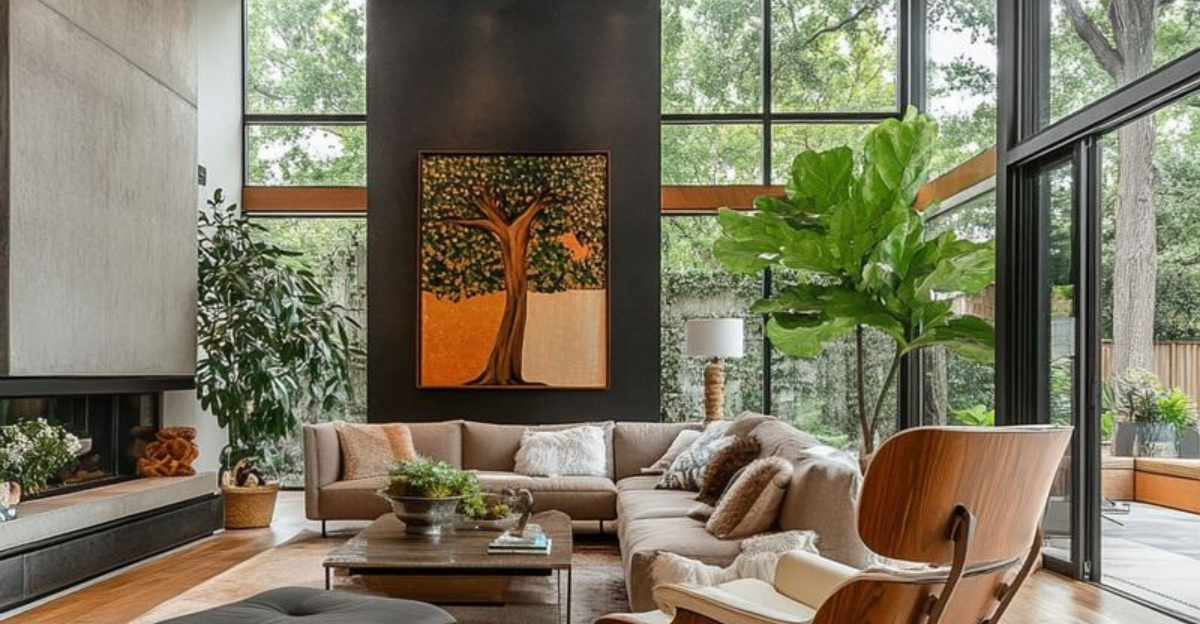Mixing mid-century modern pieces with contemporary design creates spaces that feel both timeless and fresh.
The warm woods and organic curves of mid-century furniture can soften the sleek lines of modern interiors, while contemporary elements prevent vintage pieces from feeling like a time capsule. Learning to balance these distinct styles unlocks endless design possibilities for your home.
1. Balance Wooden Elements with Metal Accents
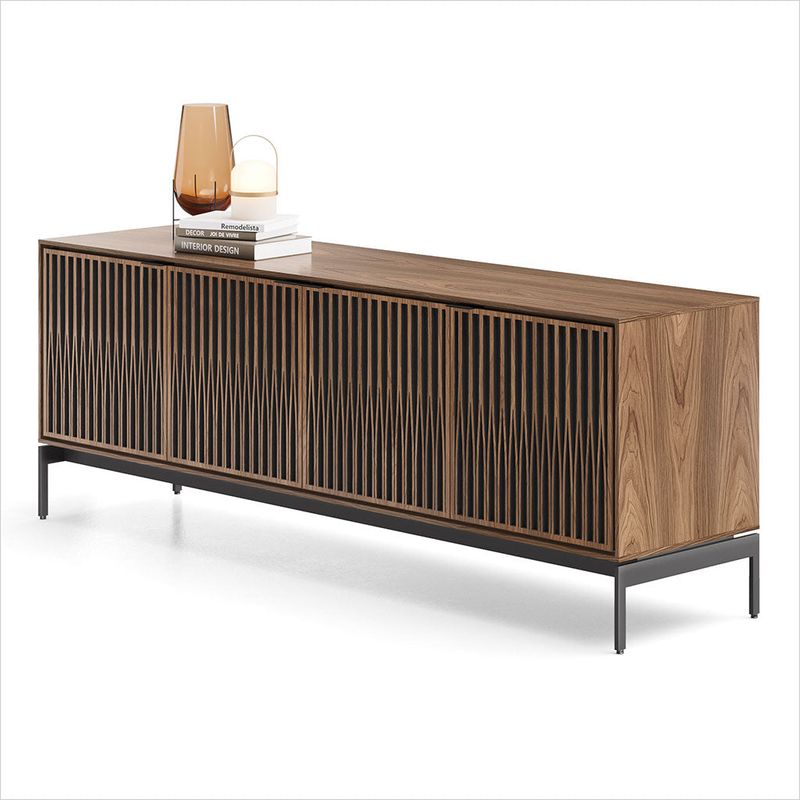
Walnut credenzas and teak coffee tables bring warmth and character to contemporary spaces dominated by cooler materials. Pair these wooden mid-century icons with brushed brass lighting fixtures or matte black steel frames.
The contrast creates visual tension while maintaining harmony. Consider how a rosewood sideboard might complement polished chrome bar stools at a kitchen island, creating dialogue between eras rather than competition.
2. Create Conversation Areas with Statement Chairs
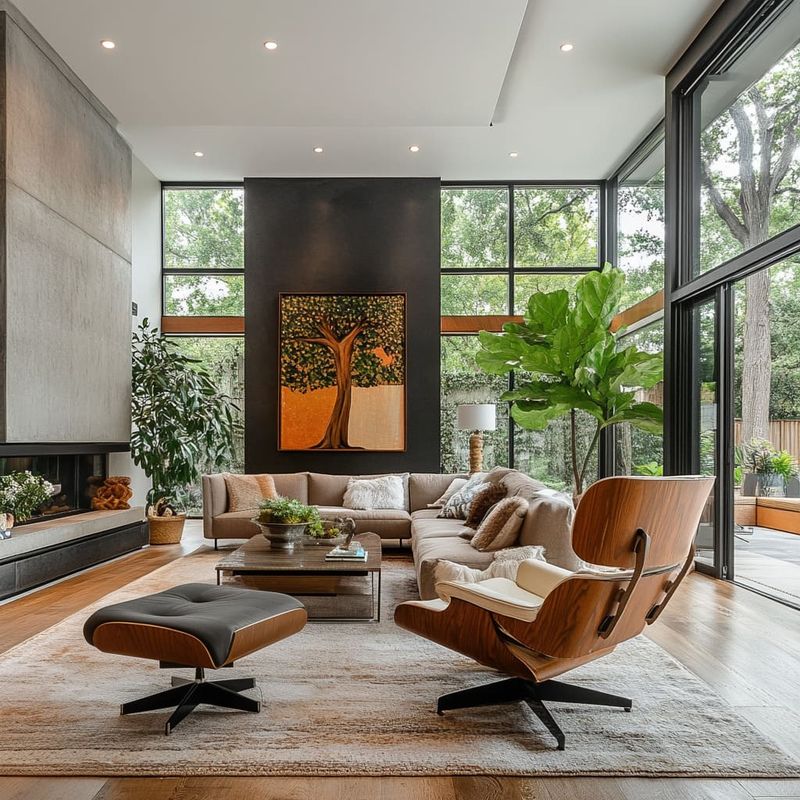
An Eames lounge chair or Wegner wishbone seat becomes an instant focal point when positioned against minimalist furniture. Float iconic chairs away from walls to create intimate conversation zones that break up open-concept layouts.
Modern sectionals in neutral fabrics provide the perfect backdrop. The juxtaposition highlights the sculptural qualities of vintage seating while maintaining a cohesive visual rhythm throughout your space.
3. Layer Textures for Dimension
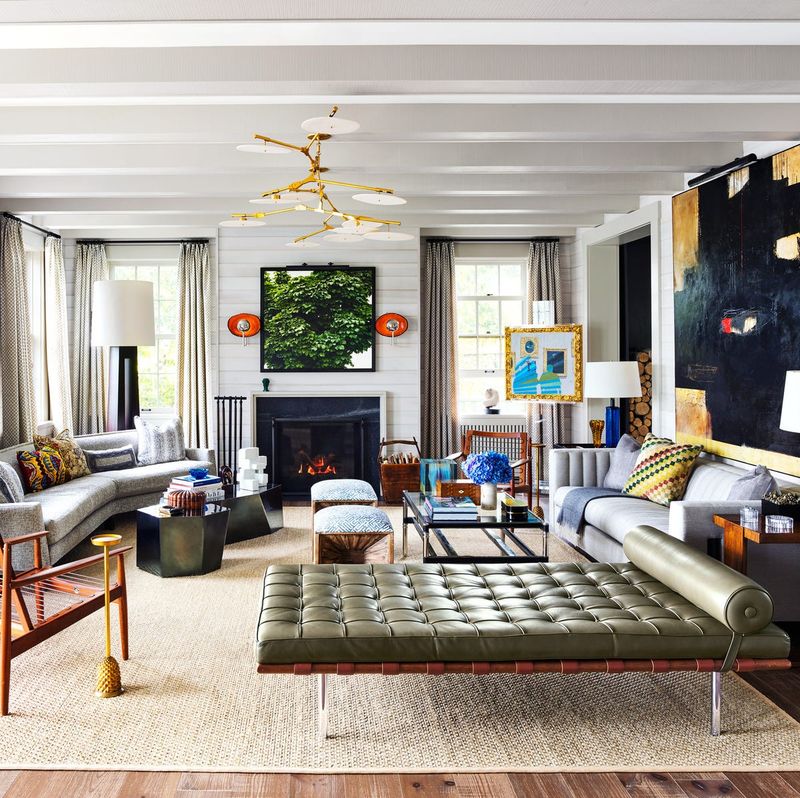
Mid-century’s smooth veneer surfaces gain new life when contrasted with tactile contemporary fabrics. Bouclé pillows atop a streamlined sofa or a nubby wool throw draped over an angular chair creates sensory interest.
Mix leather, wood, glass, and woven elements within the same vignette. Consider a sleek glass coffee table paired with a textured jute rug beneath—the juxtaposition avoids the sterile feel that often plagues purely contemporary rooms.
4. Embrace Negative Space
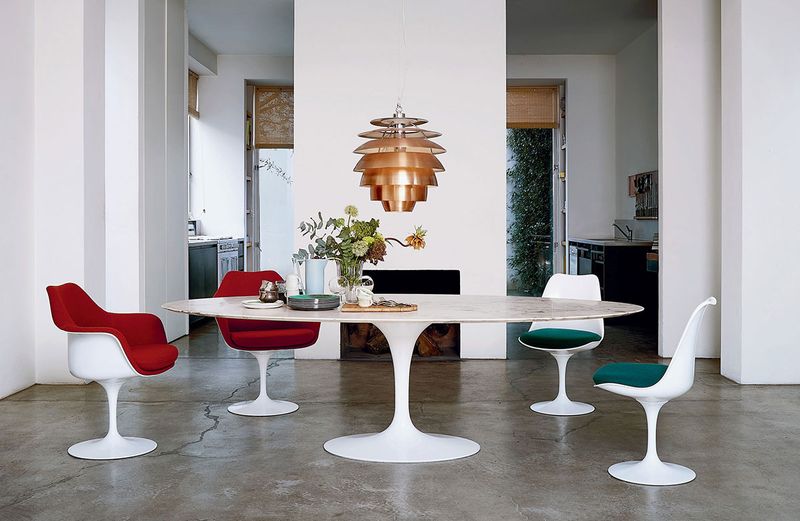
Mid-century designers celebrated breathing room between pieces, a principle that aligns perfectly with contemporary minimalism. Allow statement furniture to stand proud with ample space surrounding it rather than crowding rooms with accessories.
A Saarinen tulip table deserves room to showcase its sculptural base. Contemporary interiors benefit from this restraint—the eye needs rest to appreciate the distinctive silhouettes of iconic pieces.
5. Unify with a Neutral Color Palette
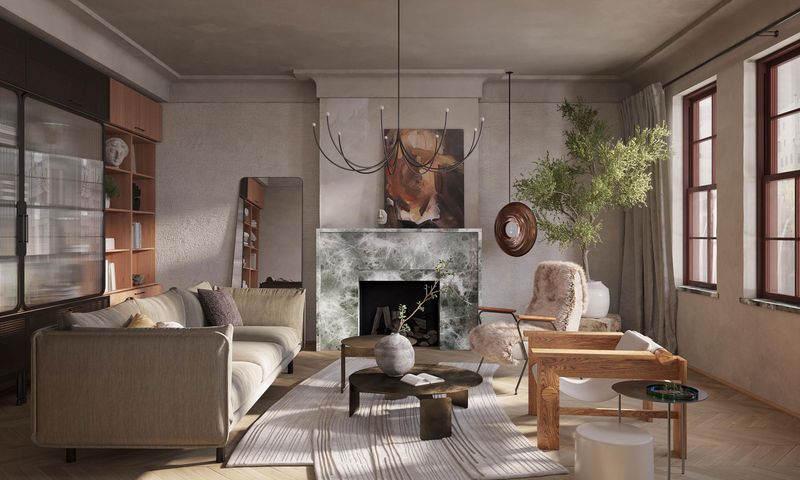
Muted tones create harmony between different design eras. Whites, grays, and warm neutrals allow both contemporary and mid-century pieces to coexist without competing for attention.
Add depth through variations in tone rather than bold contrasts. Reserve vibrant colors for small accessories that can be easily changed when design preferences evolve.
6. Mix Curved and Angular Forms
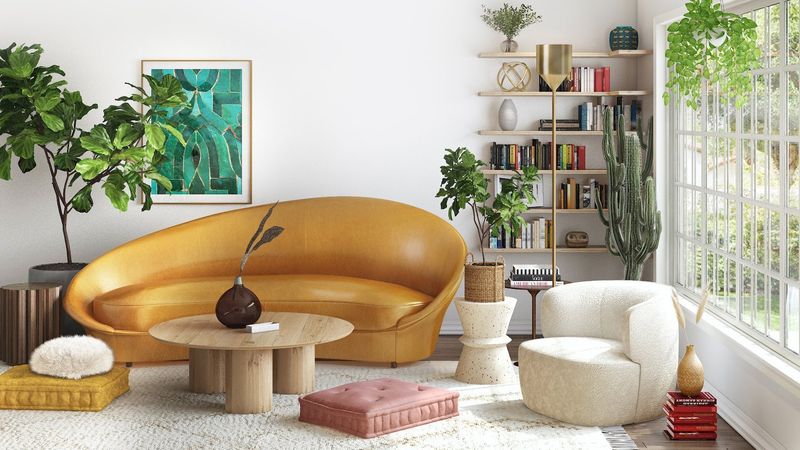
The organic curves of mid-century pieces soften the rigid geometry of contemporary design. Pair a rounded Noguchi coffee table with a linear sectional, or balance a boxy contemporary bookcase with curved-back dining chairs.
This contrast creates visual rhythm while highlighting the distinctive characteristics of each era. Consider how an arched floor lamp might complement the straight lines of a modern entertainment unit, creating a dance between opposing forms.
7. Update with Contemporary Lighting
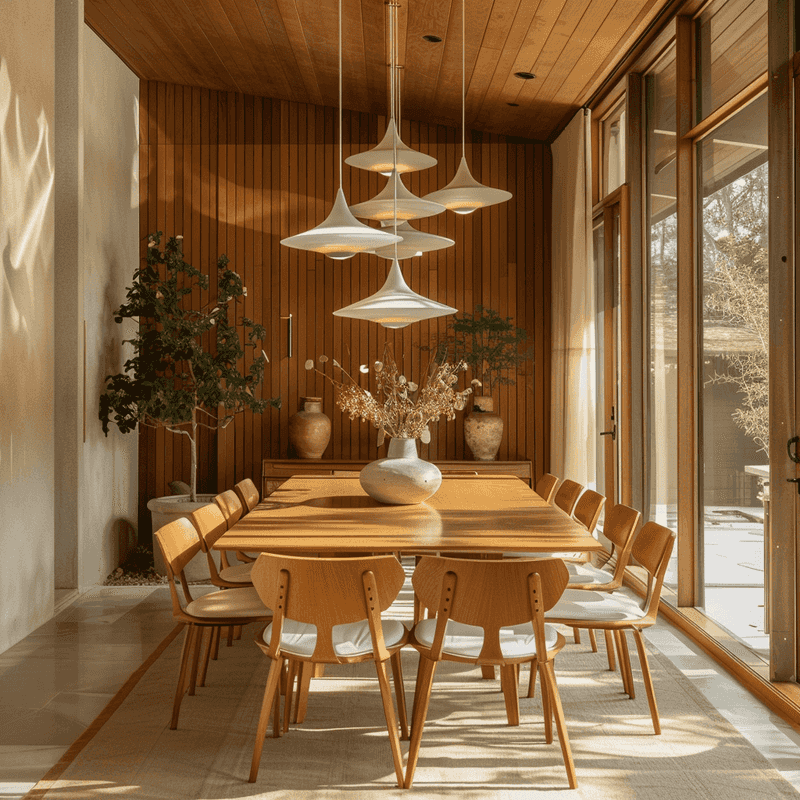
Lighting functions as jewelry for a room, connecting disparate style elements. Suspend sleek pendant fixtures above a vintage dining table or flank a mid-century sofa with contemporary floor lamps.
Modern lighting brings fresh energy to heritage pieces without overwhelming them. The juxtaposition feels intentional rather than haphazard—a curator’s touch rather than a collector’s.
8. Anchor with Contemporary Rugs
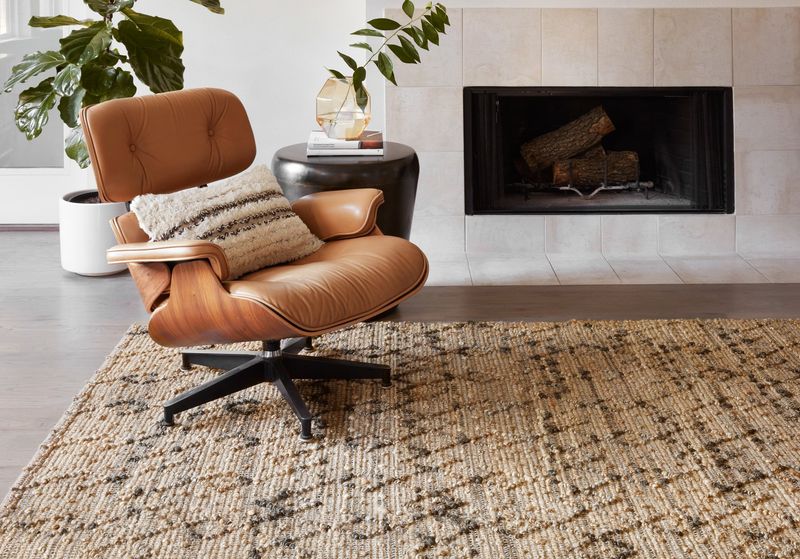
A modern rug grounds vintage furniture while preventing the time-capsule effect. Geometric patterns or textural neutrals create a fresh foundation for iconic mid-century pieces, visually connecting them to present-day aesthetics.
Consider scale carefully—a large-format pattern complements the typically modest size of mid-century furniture. A low-pile wool rug with subtle contemporary pattern beneath an Eames lounge chair instantly refreshes the classic without diminishing its character.
9. Reimagine Wall Treatments
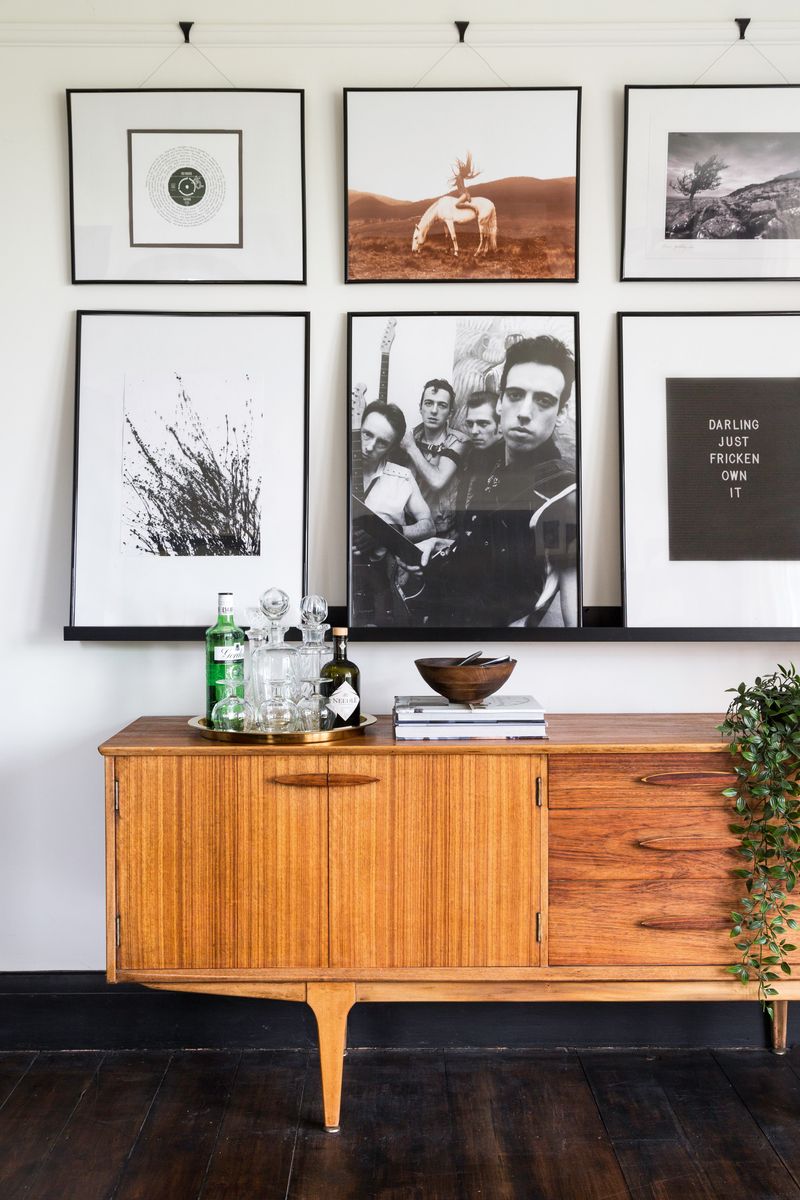
Contemporary wall finishes provide perfect backdrops for mid-century silhouettes. Consider matte microcement or large-format tile behind a floating walnut credenza—the juxtaposition highlights the warmth of vintage wood grain against modern surfaces.
Avoid fussy wallpapers that compete with furniture lines. A single accent wall in deep charcoal creates dramatic contrast with honey-toned teak, while white walls elsewhere maintain visual breathing room. The result feels curated rather than coincidental.
10. Blend Materials Thoughtfully

Mid-century’s love of wood meets contemporary’s embrace of innovative materials. Pair a smoked glass coffee table with a vintage leather lounge chair, or contrast a marble-topped contemporary dining table with wooden mid-century chairs.
Material contrast creates dialogue between eras. The warm patina of aged teak alongside cool, matte concrete surfaces tells a story of design evolution. Aim for no more than three primary materials in any vignette to maintain visual coherence.
11. Scale Proportions Carefully
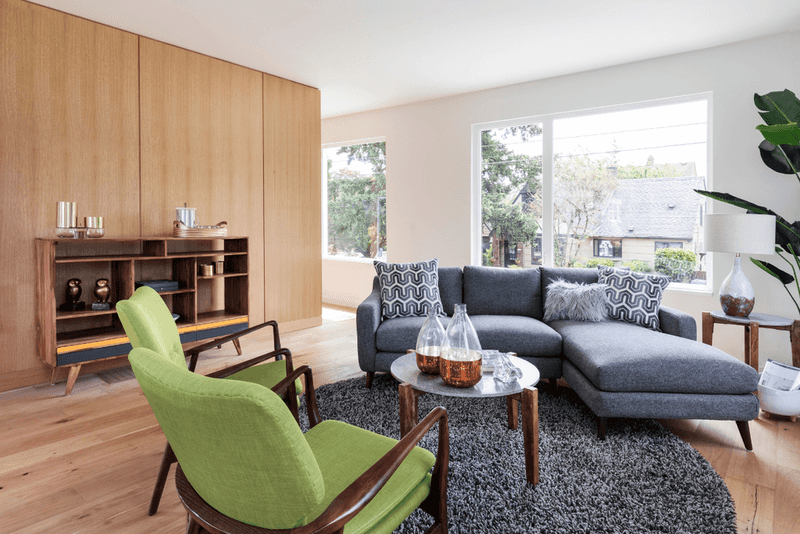
Mid-century pieces typically feature modest dimensions compared to contemporary furniture’s grander scale.
Create visual equilibrium by grouping smaller vintage items together or positioning them strategically within modern spaces. Consider how a compact vintage desk looks intentional rather than undersized when paired with a minimalist contemporary shelf system of similar height but different visual weight.
12. Modernize with Contemporary Art
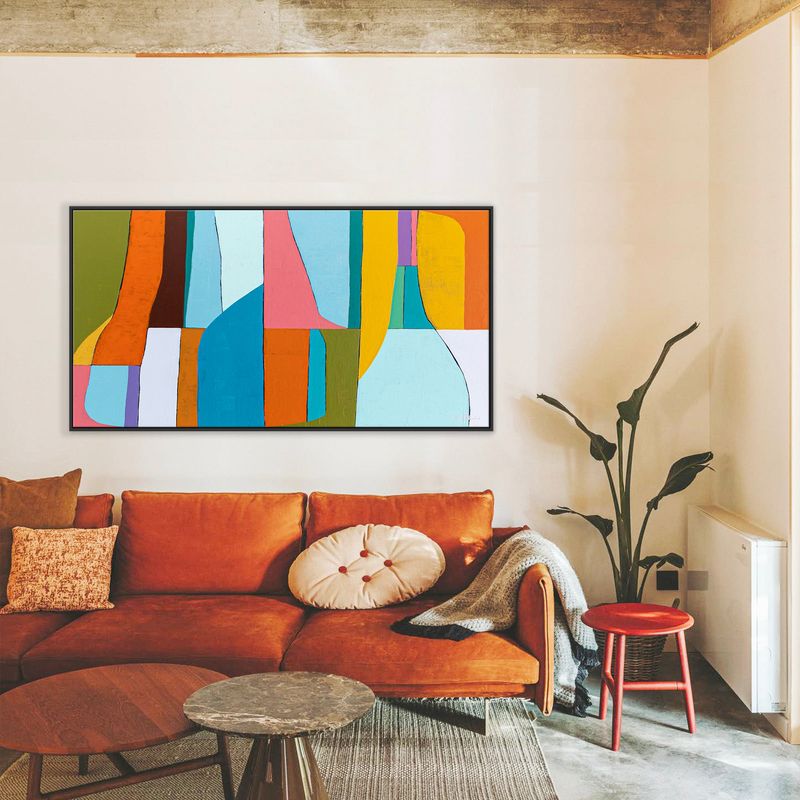
Large-scale contemporary artwork creates dynamic tension with vintage furniture. A bold abstract canvas above a low-slung mid-century sofa updates the entire composition while drawing attention to the clean lines below.
Black and white photography in minimalist frames complements wooden furniture without competing visually. Art becomes the bridge between eras—select pieces that reference mid-century color palettes or forms while maintaining contemporary execution for subtle cohesion.
13. Edit Accessories Ruthlessly
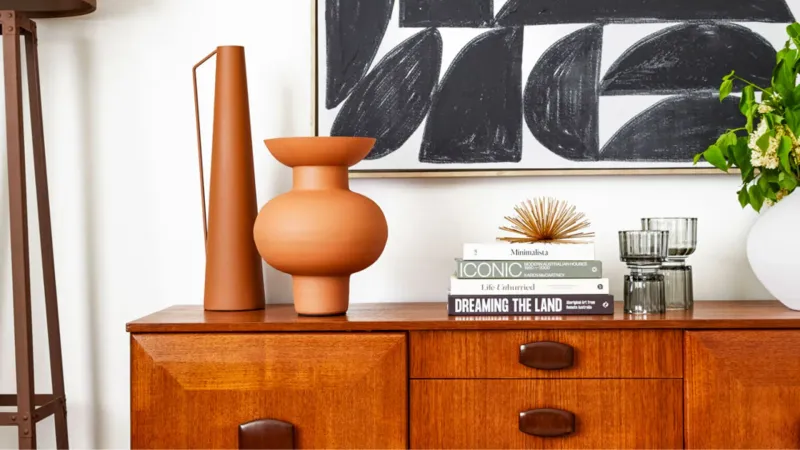
Both mid-century and contemporary design celebrate intentional simplicity. Curate accessories sparingly—a single sculptural vessel atop a teak sideboard makes more impact than numerous small objects. Group items by material rather than era for cohesive vignettes. A collection of handblown glass displayed on a contemporary floating shelf creates dialogue with a vintage bar cart below. Remember that negative space enhances the presence of carefully selected pieces.
14. Connect Through Color Accents
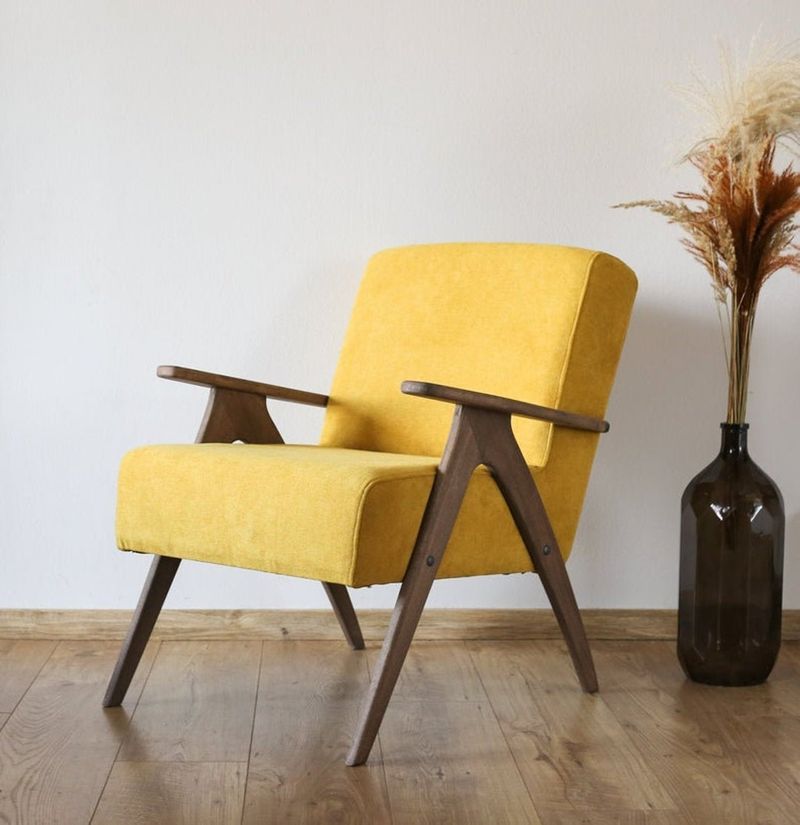
Strategic color creates continuity between different design periods. Pull a mustard yellow from a vintage chair into contemporary throw pillows, or echo the rosewood tones of mid-century pieces in modern copper accessories.
Color bridges create subtle connections that feel intentional rather than obvious. Consider how the blues in a contemporary art piece might relate to the upholstery on a vintage armchair across the room. These visual echoes create harmony without matching sets.
15. Create Functional Zones
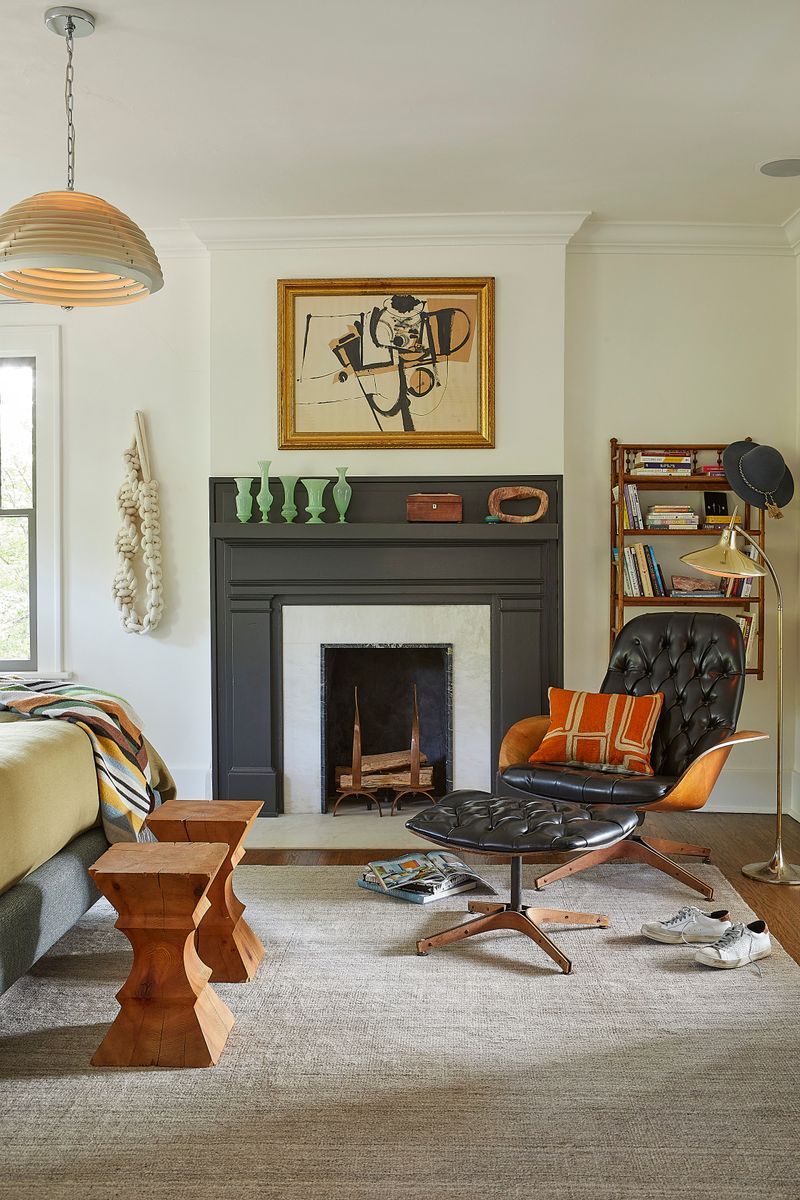
Designate specific areas where styles can fully express themselves. A reading nook featuring an iconic Eames lounge creates a mid-century moment within a contemporary open plan. Conversely, a sleek modern desk setup might occupy another corner.
These intentional zones prevent style whiplash while allowing both aesthetics to shine. The transition between areas becomes part of the design narrative—a journey through complementary design philosophies rather than competing ones.

